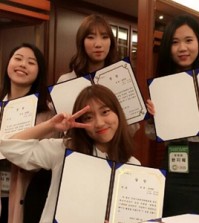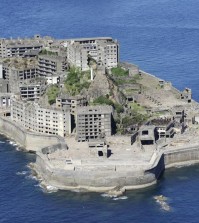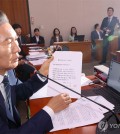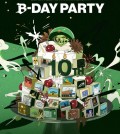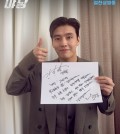- California Assembly OKs highest minimum wage in nation
- S. Korea unveils first graphic cigarette warnings
- US joins with South Korea, Japan in bid to deter North Korea
- LPGA golfer Chun In-gee finally back in action
- S. Korea won’t be top seed in final World Cup qualification round
- US men’s soccer misses 2nd straight Olympics
- US back on track in qualifying with 4-0 win over Guatemala
- High-intensity workout injuries spawn cottage industry
- CDC expands range of Zika mosquitoes into parts of Northeast
- Who knew? ‘The Walking Dead’ is helping families connect
Hangeul now more than words
Korean alphabet extends to fashion, digital gadgets, helps global literacy campaigns
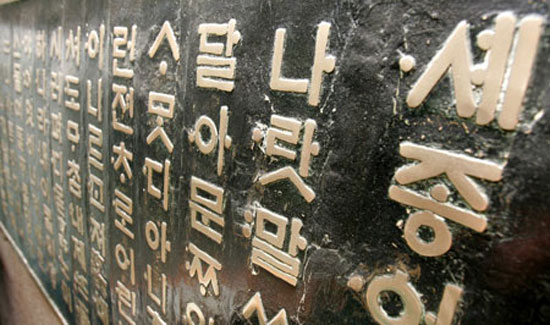
Hangeul Day, which falls on Oct. 9, has been re-designated as a national holiday from this year. Comprising 24 letters — 14 consonants and 10 vowels, hangeul, a Korean writing system, was completed by King Sejong the Great and scholars of the Joseon Kingdom in 1443 and promulgated in 1446. / Korea Times file
By Chung Ah-young
Korea boasts a literacy rate of nearly 100 percent, which means that all people aged 15 and above can read and write. In the United States, the literacy rate is 85 percent, while in China it is 73 percent. Many scholars argue that the nation’s high literacy rate is due to the efficacy of “hangeul,” the Korean alphabet.
Beginning this year, Hangeul Day, which falls on Oct. 9, has been re-designated as a national holiday. Hangeul has not only contributed to improving the nation’s literacy for hundreds of years but also encouraged other countries to combat illiteracy among their populations.
Comprising 24 letters ― 14 consonants and 10 vowels, hangeul, a writing system completed by King Sejong the Great and scholars of the Joseon Kingdom, in 1443 and promulgated in 1446, is based on the phonological structure of the Korean language. It is known as a systematic writing system that is easy to learn for people of all social class, many of who struggled to learn abstruse Chinese characters back then. Before the invention of Hangeul, the majority of people in Joseon were illiterate because the written language was classical Chinese so only a small number of elite people, mostly men, were literate.
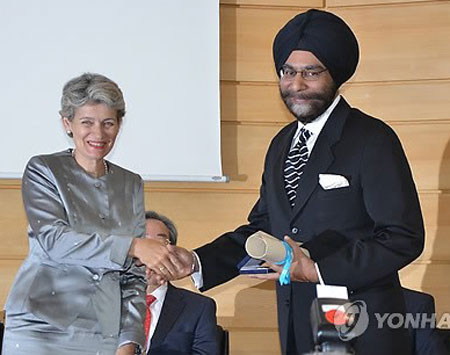
Director-General of UNESCO Irina Bokova, left, gives the UNESCO King Sejong Literacy Prize to an Indian representative from Saakshar Bharat (Literate India) Mission under the National Literacy Mission Authority (NLMA) at UNESCO headquarters in Paris, France, on Sept. 9.
/ Courtesy of Korean National Commission for UNESCO
Leading scholars from around the world have researched the scientific, innovative, and convenient nature of hangeul for a long time. In 1997, UNESCO registered the Hunminjeongeum Manuscript, a document that holds the origins of hangeul.
In honor of King Sejong’s outstanding contribution to literacy through the creation of the native Korean alphabet more than 500 years ago, the UNESCO King Sejong Literacy Prize was created in 1989. The prize consists of two awards, and compensates the work of the government, governmental agencies and NGOs who are particularly effective in the fight for literacy.
The prize was also in line with UNESCO’s efforts to fight illiteracy through the designation of an International Literacy Day on Sept. 8 in 1965. UNESCO has hosted a variety of events to overcome mass illiteracy around the world, particularly in underdeveloped countries.
The prize is a special consideration awarded for the promotion of indigenous languages in developing countries. Over the last 20 years, 42 groups from Jordan, Tunisia, Ecuador, China, Saudi Arabia, Egypt, Peru, the Philippines, Togo, Indonesia, Rwanda and others, have won the Prize.
This year, the prize went to two literacy programs in India and Chad. India’s Saakshar Bharat (Literate India) Mission under the National Literacy Mission Authority (NLMA) was one recipient. The program began in 2009 to educate some 70 million adults by 2017. In less than four years since its inception, 17.3 million adults have become qualified as literate through following the program. More than 10 million Indians participate in the program every year, which is now provided in 26 languages in 25 regions. The mission activities include basic education, vocational education, functional literacy, addressing low-level adult literacy and women’s inequality in literacy education.
The Mother Tongue Literacy program from the Federation of Associations for the Promotion of Guera Languages (FAPGL) in Chad was honored in recognition of its diverse training programs including language education and income-generating activities as well as development and standardization of the Guera languages. Guera is one of the 22 regional areas in Chad. The program has helped Guera people become literate in cooperation with various agencies including its education ministry and universities and NGOs. Since it was launched in 2012, 13 languages have been taught in 143 literacy centers for 6,577 learners, of whom 5,356 were women and young girls who are regarded as the most vulnerable group in terms of illiteracy.

Iconic fashion designer Lie Sang-bong’s attire inspired by the hangeul characters is on display at Cheongju International Craft Biennale through Oct. 20 in Cheongju, North Chungcheong Province. / Yonhap
The Korean Ministry of Culture, Sports and Tourism and the Korean National Commission for UNESCO has annually invited the prize winners since 2009. In line with “Hangeul Week,” which includes Hangeul Day, the invitation gives them the opportunities to share hangeul-related events and share the value of literacy campaign.
The Korean government will also open the Hangeul Museum this year on the premises of the National Museum of Korea in Yongsan, Seoul. The museum is expected to raise awareness and understanding of hangeul and offer various programs such as hangeul-related exhibitions, performances and events.
Hangeul for digital and fashion items
Aside from its linguistic aspects, hangeul is a fascinating form of script for digital devices or fashion.
Iconic fashion designer Lie Sang-bong is renowned for his attire inspired by the hangeul characters and designer Lee Geon-mann, CEO of the AnF, a fashion brand, has already found success using hangeul as a major motif in commercial products such as purses, neckties, handbags and key holders.
Experts say that hangeul is the perfect script for the digital age because it works well on digital devices because of its simplicity and clarity. According to research by Yoo Han-tai, a professor teaching visual communications and information design to students at the Design Department of Sookmyung Women’s University, the speed of inputting hangeul into computers is seven-times faster than using Chinese characters and Japanese kanji. It’s because hangeul uses a system that combines a few basic phonemes to form syllabic blocks.
The construction of hangeul which creates words by adding strokes and consonants and vowels together fits well on mobile phone keys. Users of social networking services (SNS) such as Twitter, which limits word count, can make a good use of hangeul system. Ha Sang-wook, a popular SNS poet, says that his poems through SNS show the potentials of hangeul in the digital era as its structure is flexible.
Quotes from world-renowned scholars about Hangeul
“Hangeul is the best alphabet that all the languages have dreamed of.” (John Man, author of Alpha Beta: How 26 Letters shaped the Western World)
“One day is enough to master reading in Korean. Hangeul is a very scientific and convenient alphabet system for communication.” (Jean-Marie Gustave Le Clezio, Winner of Nobel Literature Prize, 2008)
“Whether or not it is ultimately the best of all conceivable scripts for Korean, Hangeul must unquestionably rank as one of the great intellectual achievements of humankind.” (Geoffrey Sampson, Professor of Natural Language Computing in the Department of Informatics, University of Sussex)
“The significant feature of Hangeul is that the shapes of the symbols in this alphabet reflect the phonological relationships … Hangeul is Korea’s gift to the world. While Hangeul is a symbol of Korean culture of the highest order, it has a significance that transcends any one country.” (Robert Ramsey, Professor of East Asian Linguistics, University of Maryland)
“Koreans invented the solely creative and amazing alphabetic writing system called Hangeul for the Korean people. Hangeul is perhaps the most scientific system of writing in general use in any country.” (E. O. Reischauer, Professor, Harvard University)
“I think it is a natural and proper reaction that all linguists in the world celebrate the birthday of Hangeul as a public holiday.” (J. D. McCawley, Linguist and Professor, University of Chicago)
“It is the simplest writing system in the world. Sejong is the Korean Leonardo da Vinci as he is gifted with deep and various talents.” (Pearl S. Buck 1938, Winner of Nobel Literature Prize, 1938)







